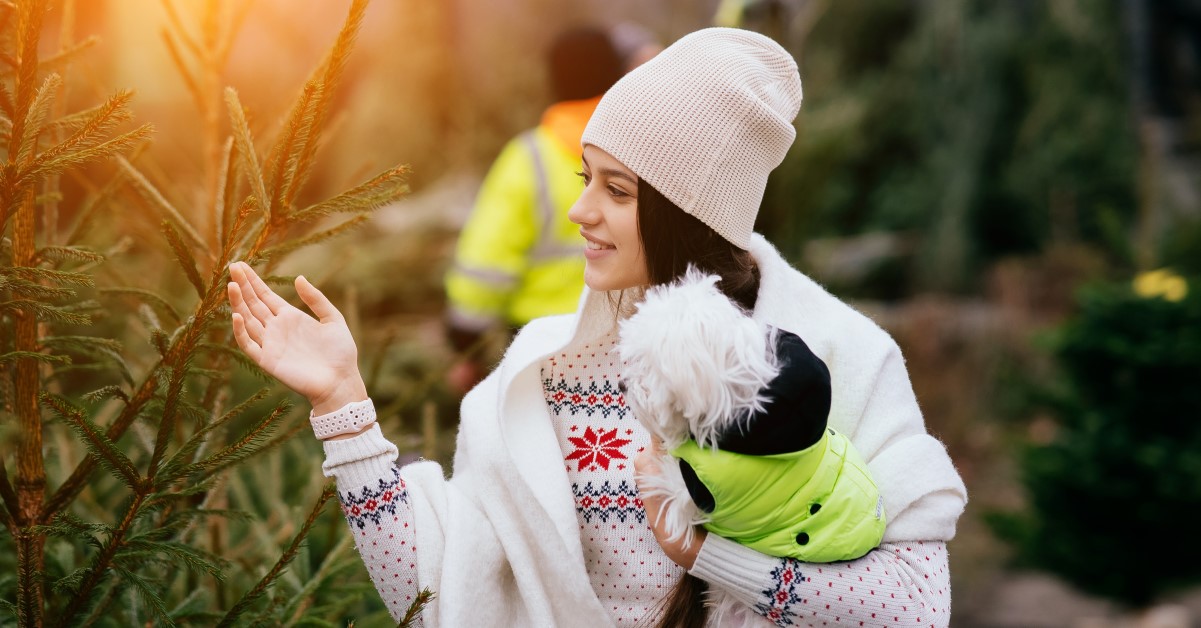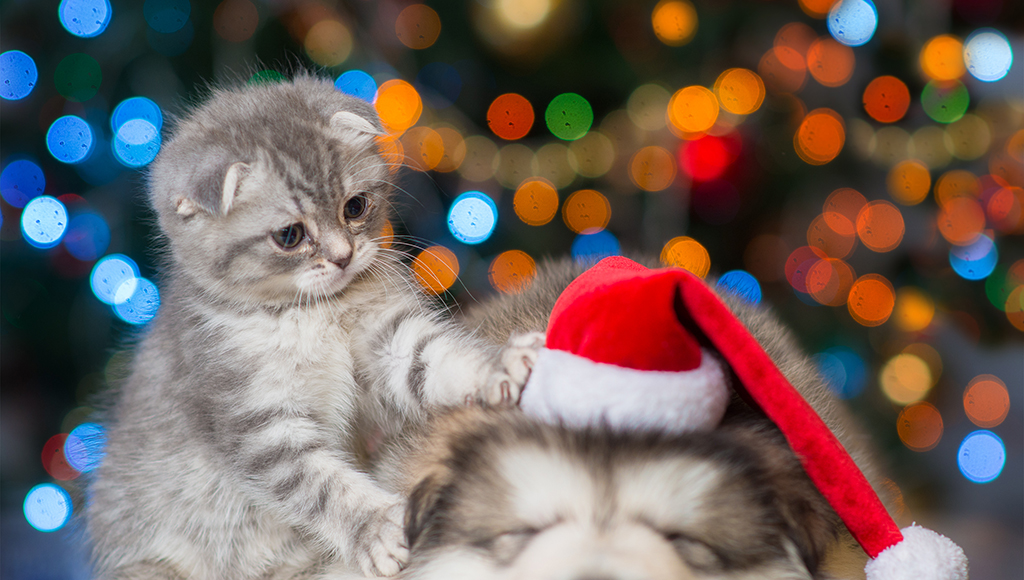Holiday Plants to Avoid in Pet-Friendly Households
Keep your pet safe this holiday season by putting harmful plants like mistletoe and poinsettias out of reach.

Holiday plants like mistletoe, holly, and poinsettias can be a great addition to your Christmas décor. However, if you live in a household with pets, it’s important to use caution. Some holiday plants are known to cause harm to pets who chew or consume them. Learn what traditional holiday plants could pose a threat to your pets.
Holiday Plants That Are Toxic to Pets
1. Christmas Cactus
It’s not unusual to receive a Christmas cactus during the holidays. This blooming succulent is easy to care for and grows lovely flowers in an array of colors. As cats and dogs are curious by nature, you may discover that your pet has nibbled on a piece of your Christmas cactus.
The good news is that Christmas Cactus is not poisonous to pets. However, consuming the plant can cause illness. Pets who eat Christmas cactus may suffer from upset stomach, loose stools, or diarrhea. If the plant has been sprayed with pesticides, these chemicals could also cause an array of symptoms, such as drooling and vomiting.
2. Poinsettias
Native to Mexico, poinsettias have a direct association with Christmas due to their bold red leaves. Poinsettias can be found in more than 100 varieties and can actually grow up to 15 feet tall.
Poinsettias are considered to be mildly toxic to pets and should be kept in the home with caution. The harmful part of the poinsettia is its milky white sap that contains chemicals similar to those found in detergents. When ingested in large quantities, pets can exhibit diarrhea, vomiting, and drooling. Skin irritation can also occur when pets come into direct contact with the plant.
3. Holly
Holly is commonly hung in homes to accompany Christmas trees. It is a genus of approximately 400 species of flowering plants and is known for its clusters of bright red berries and green leaves.
During the holidays, keep holly away from both children and pets as this plant can be toxic to both. It’s important to remember that while the berries may remain firmly attached to the plant while fresh, they can start to drop off once the plant dries. Your children or pets can then pick them up and mistake them as a treat. Holly poisoning can cause various symptoms, such as bleeding in the mouth and loss of appetite.
4. Mistletoe
Mistletoe is a type of semi-parasitic plant that attaches to trees via suckers roots. You may have mistletoe in your house this holiday season, as kissing under the mistletoe is a common tradition in the U.S. and around the world.
If you plan on having mistletoe in a house with pets, be sure to hang it high where your furry friends can’t reach. Mistletoe contains highly toxic chemicals like lectins and phora toxins that can harm the heart, cause low blood pressure and gastrointestinal upset.
5. Pine
Pines belong to a family of about 250 woody, seed-producing plants. These evergreen coniferous trees can grow up to 150 feet tall and are commonly used as Christmas trees during the holiday season.
If you’re trying to decide what type of tree to decorate your home with this Christmas, you may want to avoid pines if you have pets. Pine needles can be chewed or ingested by pets, irritating the mouth and GI tract. Although pine trees are not toxic to dogs, they can cause complications that can lead to liver damage or even death.
6. Lilies
Lilies are perennial plants and have been consistently ranked as one of the most popular flowers on the planet. They are easy to grow and can be found in a variety of beautiful colors. White lilies, in particular, are used to give winter bouquets a classic look.
While lilies are lovely to see and smell, they pose a safety risk to your pet. Every part of the lily, including the leaves, stem, flowers, pollen, and the water in the vase, contains toxic components to cats and dogs. These plants can cause severe toxicosis, as well as acute kidney damage.
7. Daffodils
Most known for their bright yellow hue, daffodils are spring-flowering bulbs that bloom year after year. Paperwhite daffodils are a popular Christmas flower and take on a bright white appearance, perfect for winter.
While daffodils can be a pretty addition to any holiday table, ensure that your pet is not able to get to them. Daffodils are poisonous to dogs if the bulbs or flowers are consumed. Even the water that the daffodils sit in can be toxic. Pets that ingest daffodils can experience upset stomach, diarrhea, and drooling. Difficulty breathing is also a possible side effect of flower consumption.
8. Amaryllis
Amaryllis is one of the easiest flowers to grow. Their large, trumpet-shaped blossoms measure an average of 8-inches across and feature a deep red color that complements any holiday décor. While they originate in South Africa, amaryllis can be found all over the world today.
The amaryllis plant is considered toxic to pets as it contains lycorine and other noxious substances. These chemicals can cause an array of ailments, such as vomiting, diarrhea, lethargy, decreased appetite, and tremors in both dogs and cats. While all parts of the plant are toxic, the bulb is the most harmful.
Keep Your Pets Safe this Holiday Season
It can be tempting to decorate your home with traditional plants during the holiday season. However, it’s important to use extreme caution when bringing festive plants into the home that are known to be toxic to pets. Consult with your veterinarian about safe holiday plants or consider decorating with artificial varieties.
Ready to start saving money on pet wellness care?
Then take a look at Mint Wellness, the pet wellness plan that provides fast reimbursement on routine pet care. Save on vaccinations, wellness exams, preventatives, dental, and more!
Learn More
